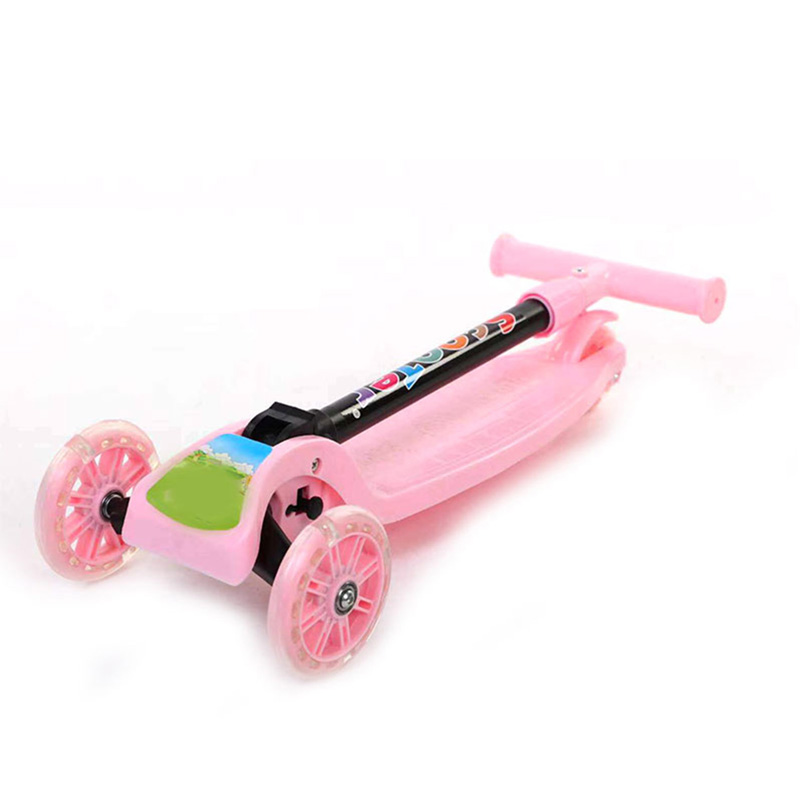How to Teach Your Kid to Ride a Scooter
Teaching your child to ride a scooter can be an exciting and rewarding experience for both of you. Not only is it a great way for kids to engage in physical activity, but it also helps them develop balance, coordination, and confidence. Here’s a guide to help you navigate the process of teaching your kid to ride a scooter safely and effectively.
Choosing the Right Scooter
Before you begin, ensure that your child has the right equipment. The scooter should be age-appropriate in size and suitable for their height. Generally, a scooter with a handlebar that reaches the waist is ideal. Additionally, make sure the scooter is lightweight, making it easier for your child to maneuver. Don't forget to invest in safety gear, including a helmet, knee pads, and elbow pads, to protect your child from potential falls.
Introduce Basics in a Safe Environment
Choose a flat, open area for your practice sessions, such as a park or a quiet street with minimal traffic. Ensure the surface is smooth to make it easier for your child to balance. Start by explaining the various parts of the scooter and how it works. Show them the throttle, brake, and how to balance while standing on it. Let them familiarize themselves with the scooter while stationary.
Getting Comfortable on the Scooter
Before moving on to riding, allow your child to practice standing on the scooter. Encourage them to place one foot on the footboard while keeping the other foot on the ground. This will help them understand how to balance. While they are practicing, remind them to maintain a slight bend in their knees for better stability. Allow them to take their time getting used to this position until they feel comfortable.
Practicing Movement
Once your child seems comfortable standing on the scooter, it’s time to practice moving. Encourage them to push off with one foot while the other remains on the scooter. Emphasize the importance of looking ahead and keeping their core engaged for better balance. Start with short distances, gradually increasing as their confidence builds. Remind them to keep their upper body still and use their legs to propel themselves forward.
how to teach kid to ride scooter

Braking and Stopping Safely
Teaching your child to brake safely is a crucial step. Explain how the brake system works and demonstrate how to use it. Have them practice stopping by compressing the brake with their foot while gently bringing the scooter to a halt. Emphasize the importance of starting and stopping smoothly to avoid sudden falls.
Encourage Practice and Patience
Like any new skill, riding a scooter takes time to master. Encourage your child to practice regularly, but be patient with them. Offer praise for their efforts and celebrate small milestones, like maintaining balance or mastering stopping. If they fall or feel frustrated, reassure them that it's part of the learning process. A positive attitude will help them build confidence and perseverance.
Introduce Obstacles and Variations
As your child becomes more proficient on their scooter, consider introducing slight inclines or different terrains to build their skills further. You can also create fun obstacle courses with cones or other markers to encourage them to practice maneuvering. This can make the learning process fun and engaging while enhancing their coordination and control.
Safety First
Always reiterate the importance of safety. Encourage your child to wear their helmet and pads each time they ride, and teach them to be aware of their surroundings. Remind them to ride in safe areas away from heavy traffic and to communicate with others if they are riding in public spaces.
In summary, teaching your child to ride a scooter can be an enjoyable journey. With the right scooter, a safe environment, and plenty of encouragement, your child will gain confidence and develop a new skill that promotes physical activity and fun. Happy scooting!
-

 Scoot&RideKids Child Kick Push Scooter 3 Wheels with LED Flashing Tilt Lean Boys Girls Scooter
Scoot&RideKids Child Kick Push Scooter 3 Wheels with LED Flashing Tilt Lean Boys Girls Scooter




- 4
$33.17 -

 Scoot&RideKids Scooter Child Kick Flashing LED Light Up 3 Wheel Push Adjustable Folding 3
Scoot&RideKids Scooter Child Kick Flashing LED Light Up 3 Wheel Push Adjustable Folding 3- 0
$25.52 -

 Scoot&RideKids Scooter Child Kick Flashing LED Light Up 3 Wheel Push Adjustable Folding 2
Scoot&RideKids Scooter Child Kick Flashing LED Light Up 3 Wheel Push Adjustable Folding 2- 0
$33.17 -

 Scoot&RideKids Scooter Teens Foldable Kick Push Scooter Adjustable Height Safe 2 Wheels
Scoot&RideKids Scooter Teens Foldable Kick Push Scooter Adjustable Height Safe 2 Wheels




- 4
$49.99
Meet our partners and discover what powers their creativity!
When you register for a Lohas scooter, you will receive a 10% discount on your first order and can be notified of sales, new product launches and other offers in advance.









